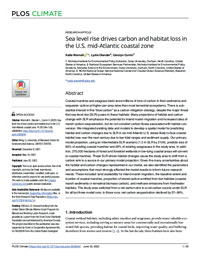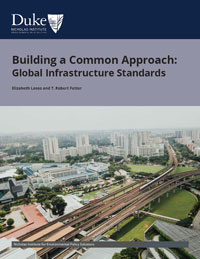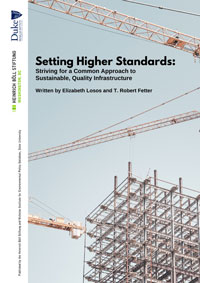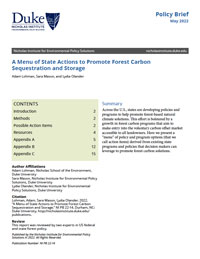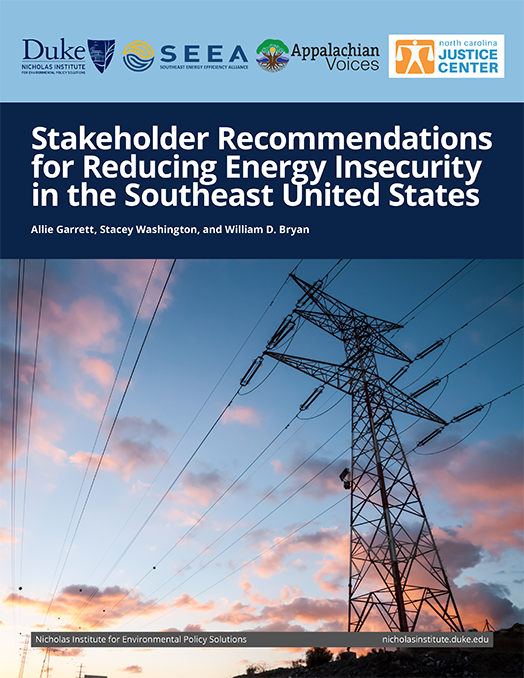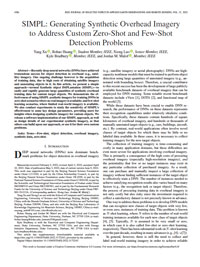Publications
Sea Level Rise Drives Carbon and Habitat Loss in the U.S. Mid-Atlantic Coastal Zone
As the climate changes, marshes on the Atlantic coast will migrate inland and cause even more carbon to be released into the atmosphere, a new modeling study finds. Researchers developed a spatial model for predicting habitat and carbon changes due to SLR in six mid-Atlantic U.S. states likely to face coastal habitat loss. The modeling runs looked at land changes in coastal areas through the year 2104 in scenarios that predict intermediate sea level rise. In 16 out of the 19 runs of the model, inland marsh migration converted land from a net carbon sink to a net carbon source.
Building a Common Approach: Global Infrastructure Standards
Well-planned, -designed, and -built infrastructure projects are critically needed to improve economic productivity, transition to a low-carbon economy, mitigate environmental risks, and promote human rights and social inclusion. Investors lack a reliable, widely recognized global standard for identifying “bankable” infrastructure projects with low environmental, social, and governance risks; high debt transparency; and reliable economic returns. A new report compares three sets of standards under development and offers recommendations to reduce confusion and advance a common approach.
Setting Higher Standards: Striving for a Common Approach to Sustainable, Quality Infrastructure
A barrier to the development of high-quality, sustainable infrastructure is the lack of a global standard for identifying projects with low environmental, social, and governance risks; high debt transparency; and reliable economic returns. This policy brief focuses on two new initiatives being developed to meet this need—Blue Dot Network and FAST-Infra—and offers recommendations to reduce competition between them and promote the broadscale advancement of quality, sustainable infrastructure.
Customer Assistance Programs and Water Affordability
Water affordability is a growing concern, with inflation, aging infrastructure, source water protection, climate change, and other factors pushing up the cost of providing water. Customer assistance program (CAP) rate discounts provide needed assistance but may not be sufficient to ensure that water services are affordable. Rather than relying on one approach, such as CAPs, a combination of approaches might be optimal for addressing water affordability issues.
A Menu of State Actions to Promote Forest Carbon Sequestration and Storage
Across the U.S., states are developing policies and programs to help promote forest-based natural climate solutions. This effort is bolstered by a growth in forest carbon programs that aim to make entry into the voluntary carbon offset market accessible to all landowners. Here we present a “menu” of policy and program options (that we call action items) derived from existing state programs and policies that decision makers can leverage to promote forest carbon solutions.
Stakeholder Recommendations for Reducing Energy Insecurity in the Southeast United States
Energy insecurity—the inability to maintain energy services like heating and cooling—is one of the most pressing issues in the Southeast, where more than one out of every four households face access or affordability challenges. The Southeast Energy Insecurity Stakeholder Initiative facilitated broad, collaborative discussions among a range of regional stakeholders to identify opportunities for reducing energy insecurity in the region.
Two Years In: A Progress Update on the North Carolina Energy Efficiency Roadmap
Energy efficiency provides a least-cost option for meeting energy demand while also lowering energy bills and reducing greenhouse gas emissions. In 2019, the Nicholas Institute for Environmental Policy Solutions published the North Carolina Energy Efficiency Roadmap outlining 32 recommendations for enhancing energy efficiency in the state of North Carolina. This policy brief provides a two-year update on the status of those recommendations.
SIMPL: Generating Synthetic Overhead Imagery to Address Custom Zero-Shot and Few-Shot Detection Problems
Recently deep neural networks (DNNs) have achieved tremendous success for object detection in overhead (e.g., satellite) imagery. One ongoing challenge however is the acquisition of training data, due to high costs of obtaining satellite imagery and annotating objects in it. In this article, we present a simple approach—termed Synthetic object IMPLantation (SIMPL)—to easily and rapidly generate large quantities of synthetic overhead training data for custom target objects.
Tracking the Benefits of Natural & Working Lands in the United States: Dataset Evaluation and Readiness Assessment
Natural and working lands (NWL) in the United States provide many benefits, including food, climate mitigation, recreational opportunities, jobs, and many more. There is currently no coordinated approach in the United States to track how provision of these benefits is changing over time. This project begins to fill this gap by identifying datasets that can be used to track the status and trends of NWL benefits (i.e., ecosystem services), assessing their readiness for use in the near-term, and highlighting data gaps and limitations that need to be addressed for a national assessment.
The Evolving Global Plastics Policy Landscape: an Inventory and Effectiveness Review
Governments worldwide are increasingly adopting public policies, laws, and ordinances to reduce plastic pollution. To date, studies have not analyzed the content of, and trends in, these policies. Employing a content analysis and literature search, we set out to better understand: (i) governments responses to this problem over time, and (ii) the state of the available evidence on the effectiveness of policy responses.

